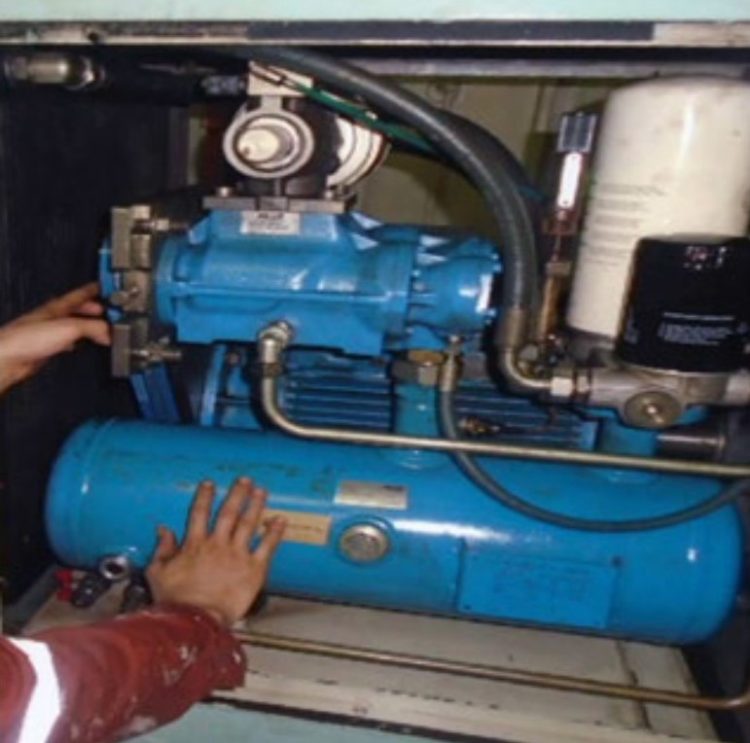In its latest Safety Digest, UK MAIB provides lessons learned from an incident where a deck air compressor automatically started while an engineer was making some final adjustments to the compressor’s belt, resulting in trapping his hand between the pulley and the belt and severing part of his index finger.
The incident
Two engineers on board a moored cargo vessel were performing routine planned maintenance to a deck air compressor. The engineers met in the machinery control room, prepared a risk assessment for the work, and isolated the power to the compressor in line with the company’s lock-out/tag-out (LOTO) procedures. After completing the maintenance, but before replacing the v-belt guards, the engineers switched the power back on to test the compressor.
One of the engineers was making some final adjustments to the compressor’s drive belt when the compressor automatically started, trapping his hand between the pulley and the belt and severing part of his index finger. After hospital treatment, the engineer returned to the vessel.

Lessons learned
#1 Hazard: Risk assessments are best conducted on site so that all potential hazards, such as automatic starting of equipment, can be identified. The benefits of reviewing generic risk assessments and undertaking dynamic risk assessments cannot be underestimated.
#2 Risk: If it is necessary to test or adjust equipment without safety guards in place, as in this case, the risks associated with the task should be identified and mitigated in the risk assessment.
#3 Procedure: LOTO procedures must remain in place until all maintenance tasks are completed. If adjustments are required to systems after a test run, then a second LOTO procedure should be instigated.
Source: Safety4Sea
